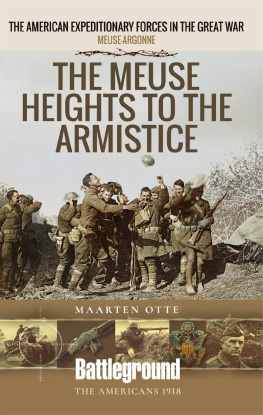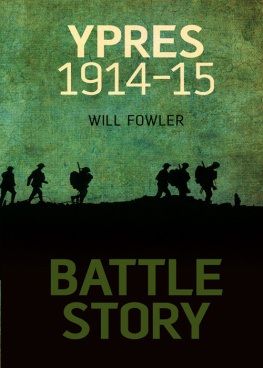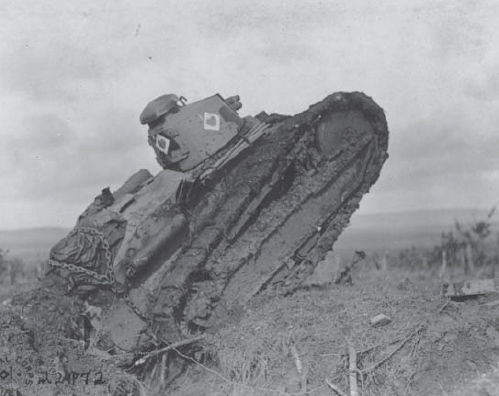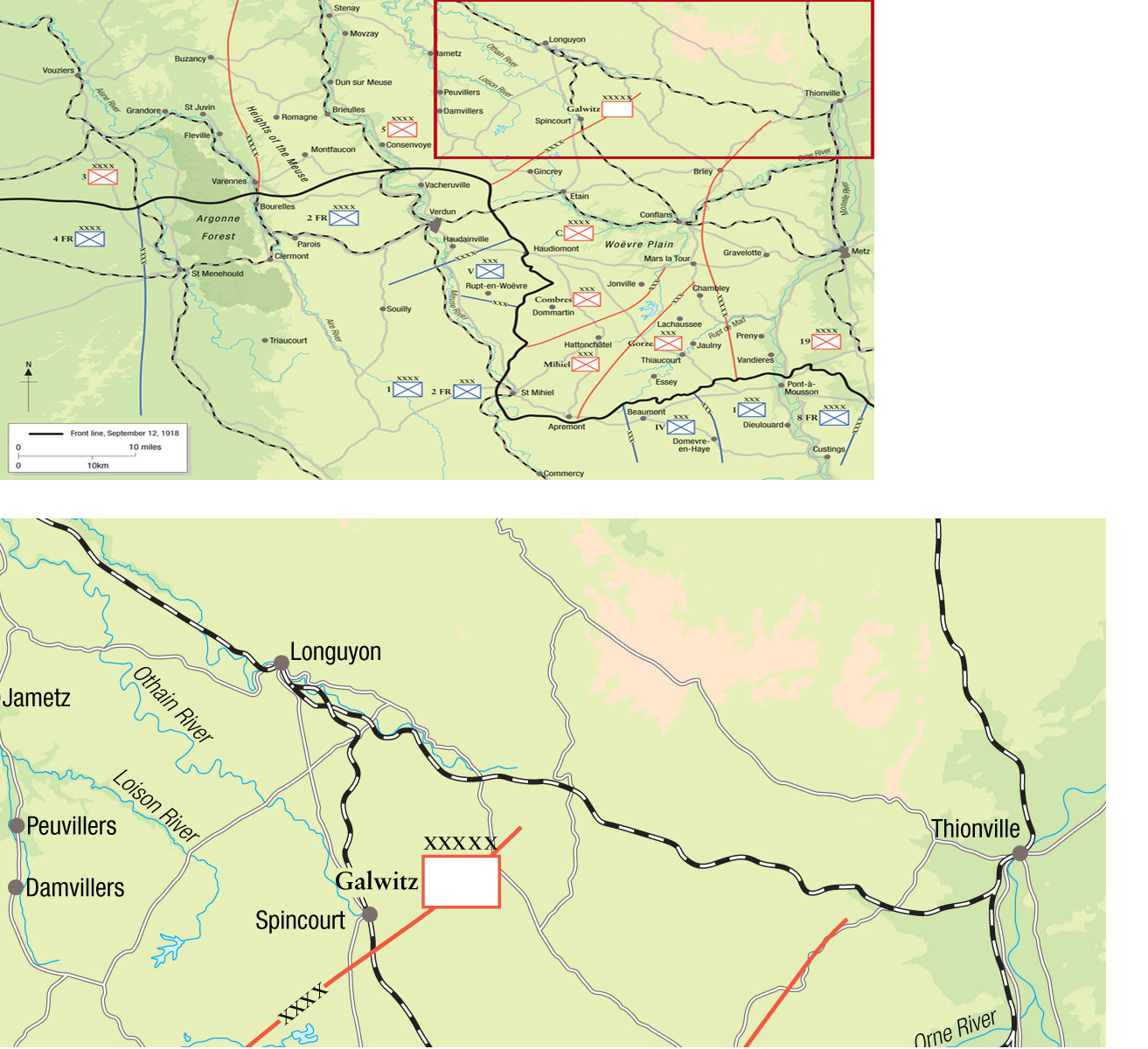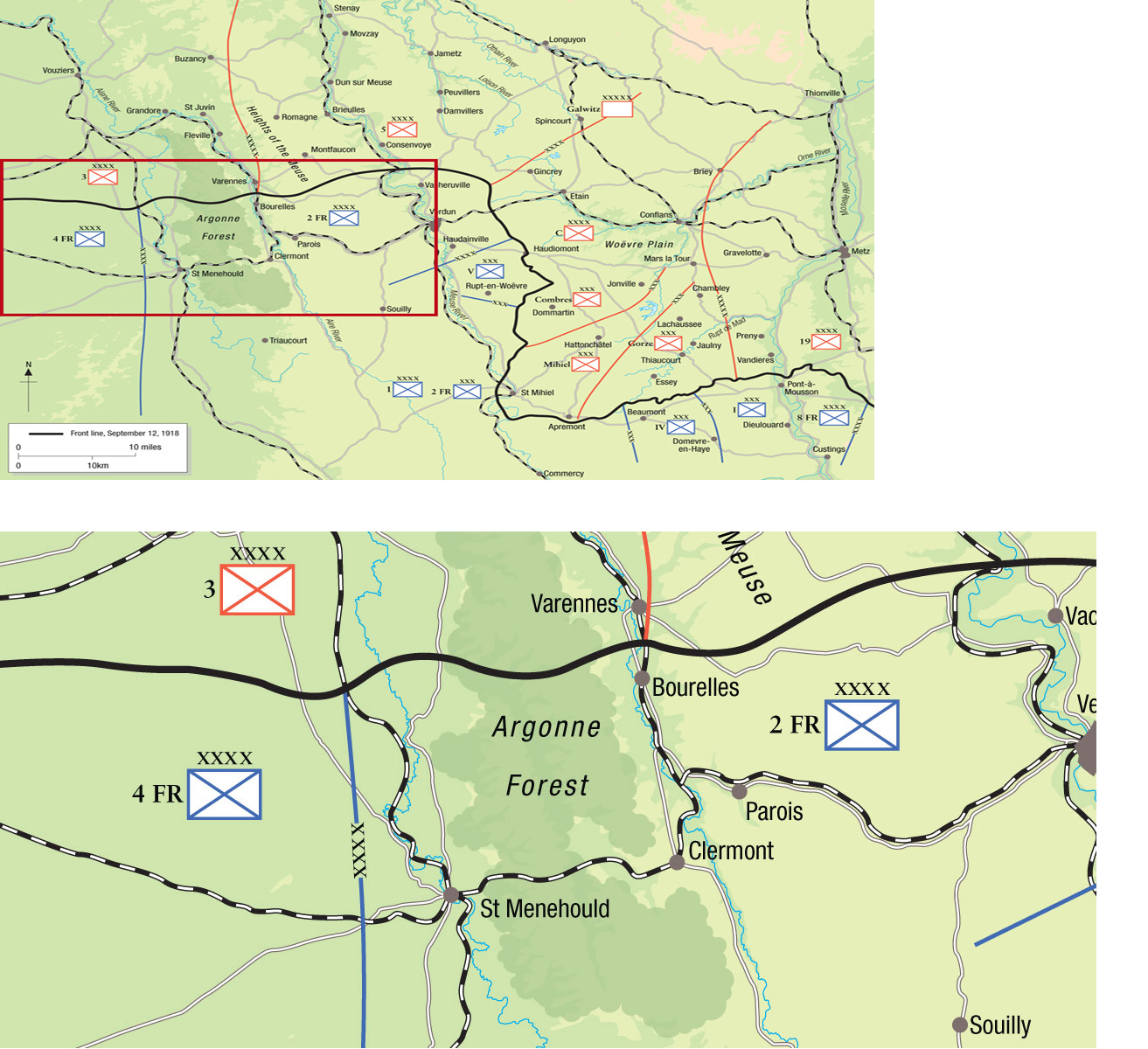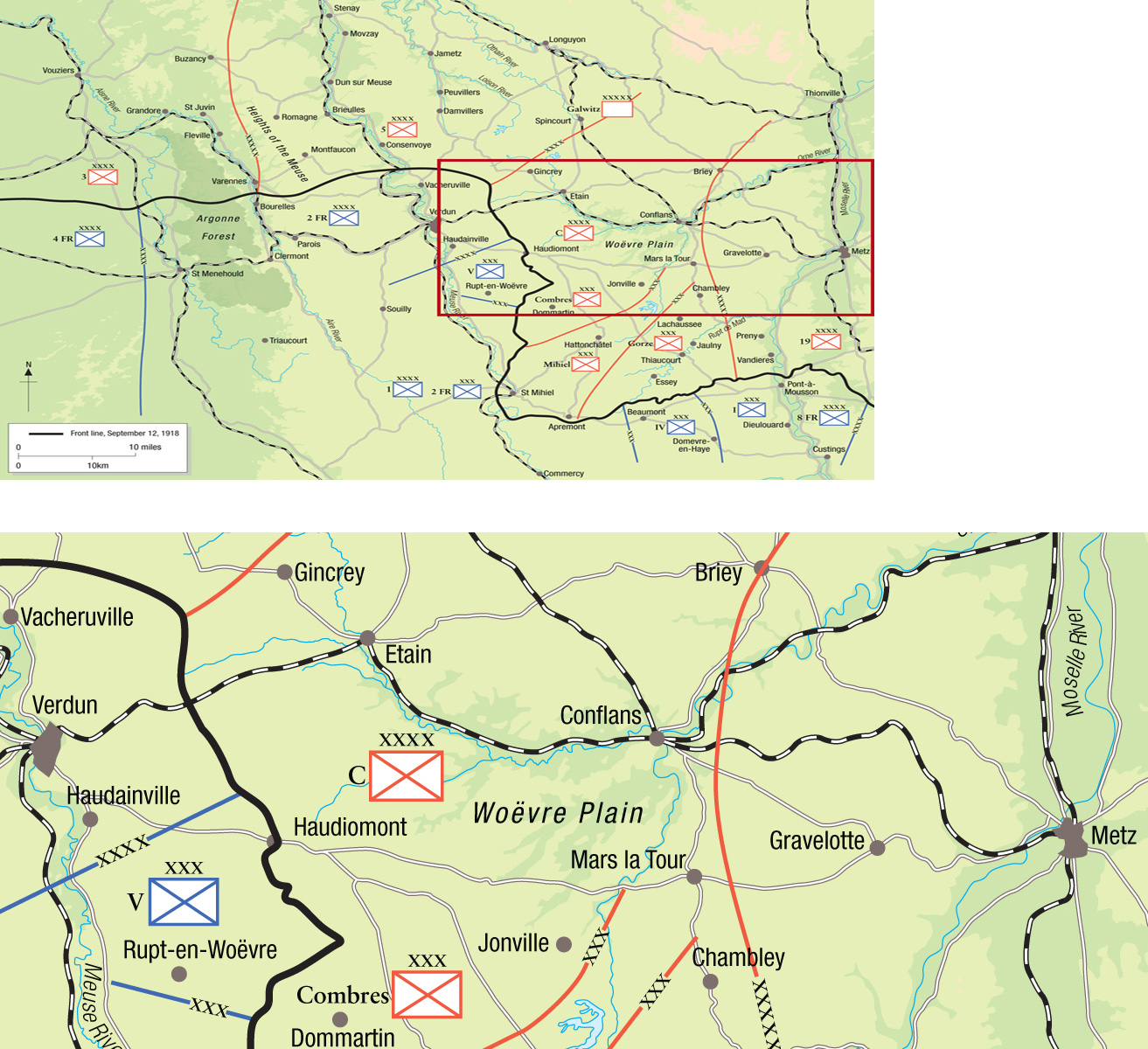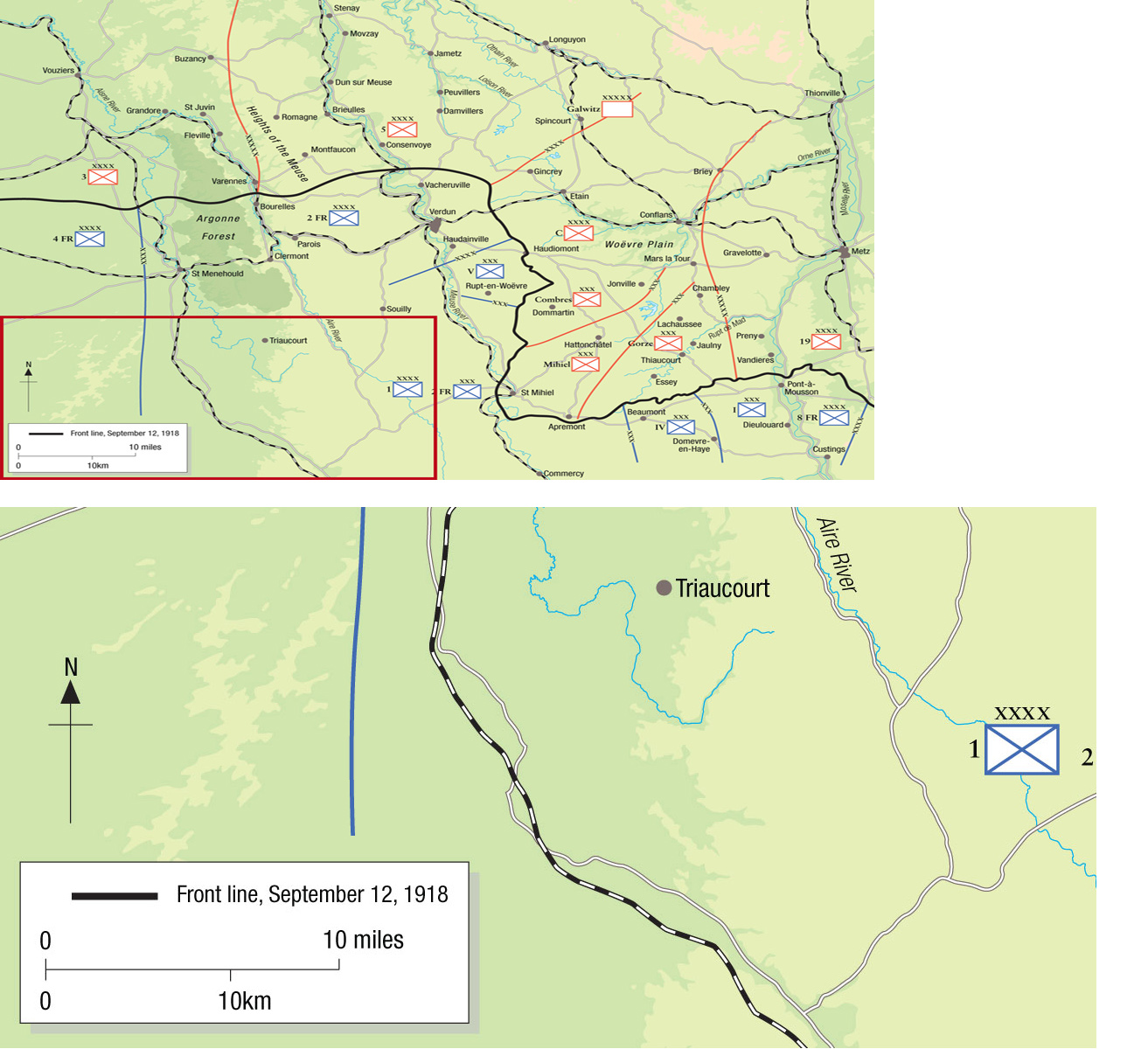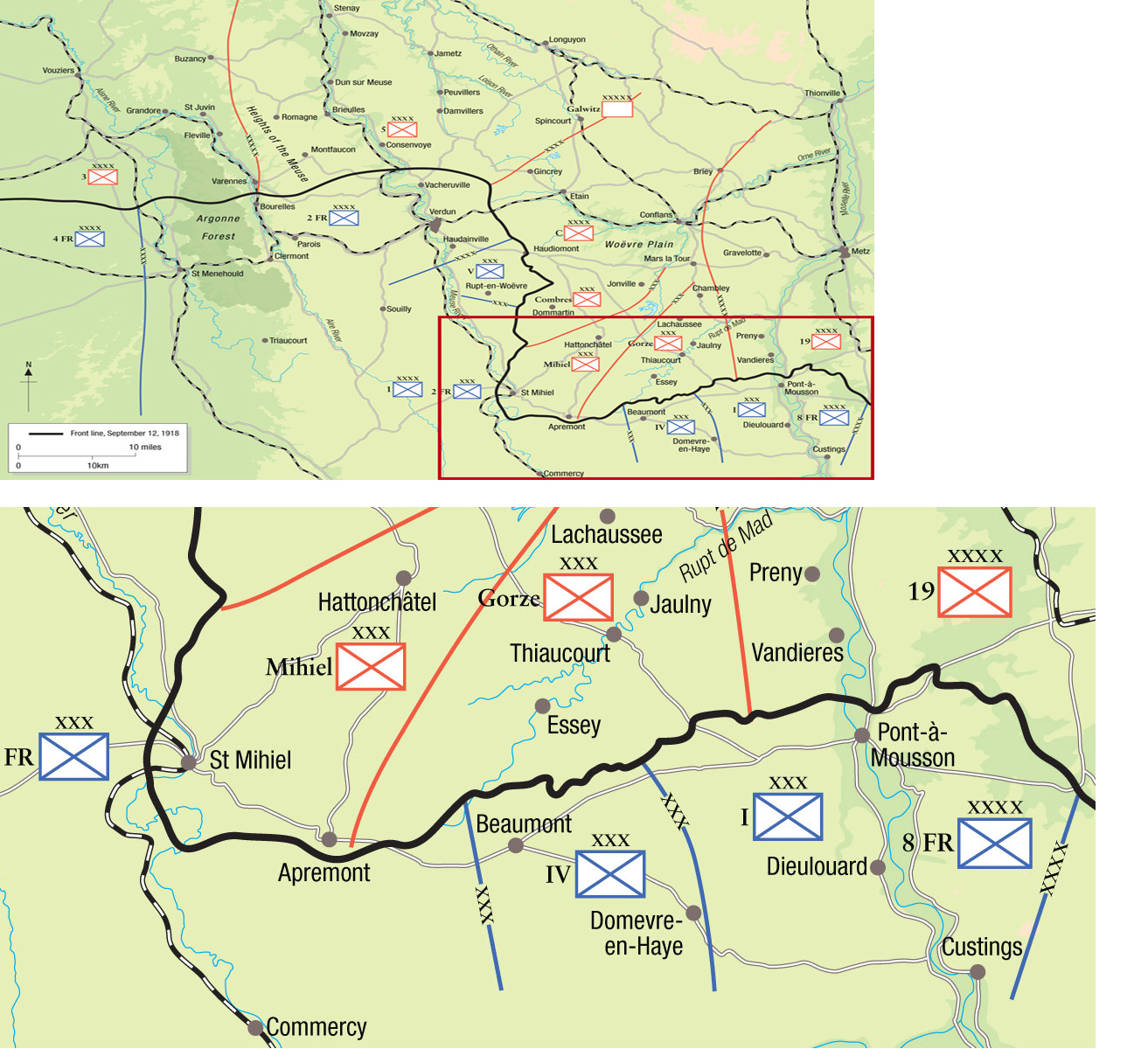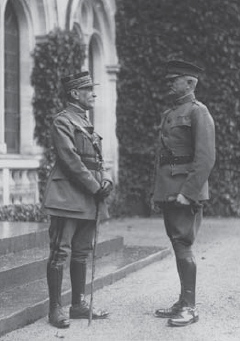CAMPAIGN 238
ST MIHIEL 1918
The American Expeditionary Forces trial by fire
| DAVID BONK | ILLUSTRATED BY HOWARD GERRARD |
Series editor Marcus Cowper
CONTENTS
Strategic overview of the St Mihiel salient
ORIGINS OF THE CAMPAIGN
In March 1918 the German Army launched a series of sledgehammer blows against both the British and French sectors of the Western Front, driving the British back toward the Channel ports and the French toward Paris. Operation Michael was the first in a series of German attacks launched over the next several months intended to shatter Allied morale and force the Allies to agree to a peace settlement before the full impact of expanding American manpower made victory impossible.
American Commander-in-Chief John J. Pershing found the Allied high command in disarray. Leaving a meeting with General Philippe Ptain on March 21, 1918, Pershing was surprised to learn that the situation along the British front was more serious than had been suggested. On March 25 Pershing met again with Ptain as rumors circulated that the French government had begun preliminary planning to abandon Paris for Bordeaux. Ptain admitted that he had ordered the headquarters moved to Chantilly and that Allied losses exceeded 150,000. More troubling was the impression that the French would not fulfill a previous mutual-aid agreement to assist the British. Rather than maintaining connection with Sir Hubert Goughs British Fifth Army, which was staggering under German attacks, Ptain appeared to be deploying his reserves to protect the northern approaches to Paris.
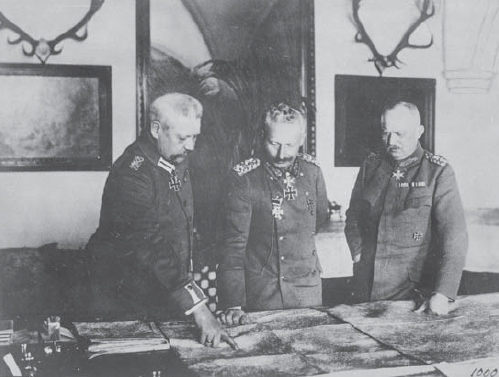
Hindenburg (left) and Ludendorff (right) with Kaiser Wilhelm. Both generals hoped that the Spring Offensive would force the Allies to negotiate a peace before the full weight of American resources could be brought to bear.
French Marshal Ferdinand Foch (left) was appointed Supreme Allied Commander in early 1918 in response to German battlefield success during the Spring Offensive.
Major-General Liggett commanded the American I Corps. Liggett was a favorite of Pershing and given increasingly important commands throughout the war.
In response to the crisis the French General Ferdinand Foch (made a Marshal of France on August 6) was appointed as overall Allied commander. On March 28, 1918, Pershing offered Foch the use of American troops. By spring 1918 the United States had almost 300,000 men deployed in various stages of training in France. Despite Pershings desire to commit American troops, it wasnt until the end of April that the 1st Division relieved two French divisions at Montdidier. The 2nd, 26th, and 42nd divisions were completing their initial training and were then assigned to various sectors along the front. The 3rd, 5th, and 23rd divisions, intended to be organized as the American III Corps, were ordered to reinforce French divisions. Assigned to the British were the American 28th and 77th divisions.
On May 27, 1918, the same day as the Germans opened Operation Blcher, the 1st Division captured the village of Cantigny. In response to the new German offensive, Pershing assigned the 2nd Division to assist the French in stemming the German push toward Paris. The 2nd Division stopped the German advance on June 3 and over the next several weeks it fought a desperate battle to recapture Belleau Wood. Elements of the 3rd Division, although only partially trained, were assigned to French command and helped stop the German advance at Chteau-Thierry.
German commanders Quartermaster General Erich Ludendorff and Field Marshal Paul von Hindenburg, becoming increasingly concerned about the impact of the continuing influx of American troops, considered their next step. The objectives of Operation Rheims were to both draw Allied forces south from the Flanders front, where the Germans intended to throw a knockout blow against the British, and to isolate and capture the city of Rheims. The capture of Rheims would allow the Germans to use its rail facilities to support their troops in the Marne salient.
French intelligence identified the German plans as early as July 5, 1918, and by July 11 the French were sure of the date and objectives of the offensive. The final German offensive, Operation Rheims, began on July 15 and involved 24 front-line divisions supported by 17 in reserve. The American 3rd Division held the Marne River line at Chteau-Thierry against repeated German attacks, while the 26th, 28th, and 42nd divisions fought under the direction of French corps and army command. The German attacks failed to make substantial headway and the offensive was canceled on July 17.
Ludendorff recognized that the failure of his offensives to cripple the Allies represented a critical reversal. The attempt to make the nations of the Entente inclined to peace before the arrival of the American reinforcements by means of German victories had failed. The energy of the army had not sufficed to deal the enemy a decisive blow before the Americans were on the spot in considerable force. It was quite clear to me that our general situation had thus become very serious.
The failure of Operation Rheims allowed the Allies to begin their counterattack against the Marne salient. On July 18 the American 1st and 2nd divisions, along with the First French Moroccan Division, attacked the heights south of Soissons. During this same period both the American 3rd and 4th divisions were deployed under French command. The American I Corps, commanded by Major-General Hunter Liggett, composed of the American 26th Division, later relieved by the 42nd Division and a French division, was engaged in support of the Soissons attack.
Between July 15 and August 6 American forces were fully engaged in the attack on the Marne salient. On August 18 General Ptain utilized the American 3rd Corps, composed of the 28th and 77th divisions, to open an offensive between Rheims and the Oise River. Several other American divisions were rotated into the line as part of the ongoing Allied offensives during the remainder of August.




